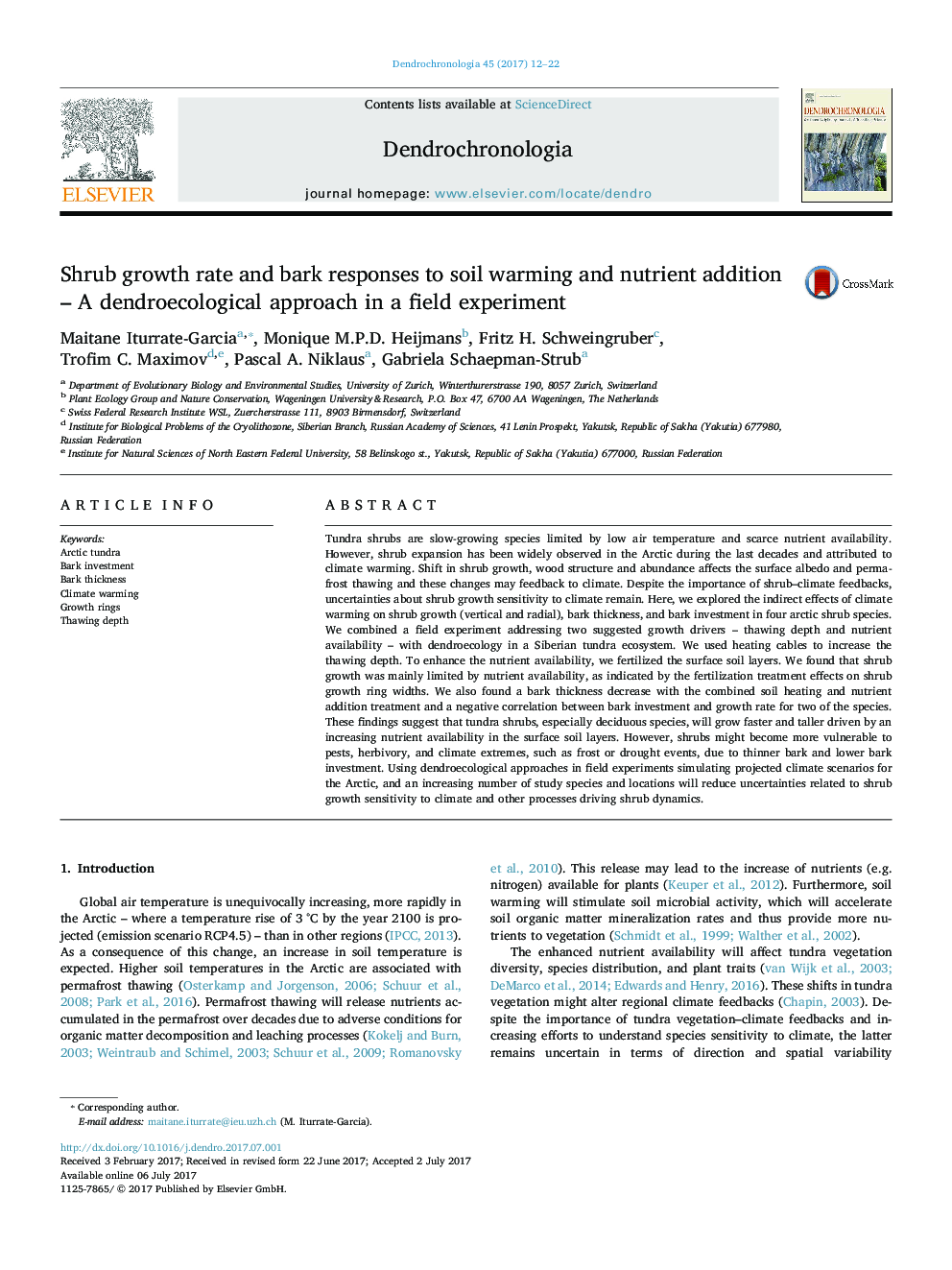| کد مقاله | کد نشریه | سال انتشار | مقاله انگلیسی | نسخه تمام متن |
|---|---|---|---|---|
| 6458966 | 1421196 | 2017 | 11 صفحه PDF | دانلود رایگان |
Tundra shrubs are slow-growing species limited by low air temperature and scarce nutrient availability. However, shrub expansion has been widely observed in the Arctic during the last decades and attributed to climate warming. Shift in shrub growth, wood structure and abundance affects the surface albedo and permafrost thawing and these changes may feedback to climate. Despite the importance of shrub-climate feedbacks, uncertainties about shrub growth sensitivity to climate remain. Here, we explored the indirect effects of climate warming on shrub growth (vertical and radial), bark thickness, and bark investment in four arctic shrub species. We combined a field experiment addressing two suggested growth drivers - thawing depth and nutrient availability - with dendroecology in a Siberian tundra ecosystem. We used heating cables to increase the thawing depth. To enhance the nutrient availability, we fertilized the surface soil layers. We found that shrub growth was mainly limited by nutrient availability, as indicated by the fertilization treatment effects on shrub growth ring widths. We also found a bark thickness decrease with the combined soil heating and nutrient addition treatment and a negative correlation between bark investment and growth rate for two of the species. These findings suggest that tundra shrubs, especially deciduous species, will grow faster and taller driven by an increasing nutrient availability in the surface soil layers. However, shrubs might become more vulnerable to pests, herbivory, and climate extremes, such as frost or drought events, due to thinner bark and lower bark investment. Using dendroecological approaches in field experiments simulating projected climate scenarios for the Arctic, and an increasing number of study species and locations will reduce uncertainties related to shrub growth sensitivity to climate and other processes driving shrub dynamics.
Journal: Dendrochronologia - Volume 45, October 2017, Pages 12-22
